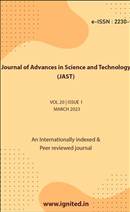To Study the Construction Techniques for Slum Rehabilitation In Metro Cites
DOI:
https://doi.org/10.29070/3741k839Keywords:
construction techniques, slum rehabilitation, metro cities, affordable housing, urbanisation, emerging nations, India, housing, economic levels, poor and moderate income groupsAbstract
The need for decent, affordable housing rises along with urbanisation. One of the biggest issuesin emerging nations like India is a lack of housing. All economic levels must have access to housing, butthe poor and moderate income groups need special attention. Affordable, quick-to-market, cost-effective,long-lasting, and environmentally friendly new sustainable technologies must be adopted in order toprovide affordable housing. This seminar explores cutting-edge, innovative technologies that may be usedacross the nation to reduce the cost of building homes and support the creation of widespread, affordablehousing. Technologies like tunnel form, Sismo buildings, light gauge steel framed structures, precastsandwich panel technology, etc. are some of those that are covered. These technologies are evaluatedaccording to a number of criteria, including their appropriateness for high-rise construction, localaccessibility, affordability, energy efficacy, structural stability, quality, speed, and cost effectiveness.Also addressed are the technology' benefits and drawbacks. In order to offer low- and middle-incomegroups with cheap housing, the conference discusses potential obstacles to the adoption of thesetechnologies in Indian cities as well as strategies for overcoming them. Fast-track building is verynecessary for large-scale housing projects like slum redevelopment. The most advantageous alternativefor building for this quick wall techniqueDownloads
References
Samer Ezeldin, Ahmed Soliman, “Hybrid Time-Cost Optimization of Nonserial Repetitive Construction Projects”, Journal of Construction Engineering and Management, Volume 135, Number 1, ISSN 0733- 9364, January 2009, 42-55.
Abdulaziz M. Jarkas, Camille G. Bitar, “Factors Affecting Construction Labor Productivity in Kuwait”, Journal of Construction Engineering and Management, Volume 138, Number 7, ISSN 0733-9364, July 2012, 811-820.
Adnan Enshassi, Sherif Mohamed, Ibrahim Madi, “Contractors’ Perspectives towards Factors Affecting Cost Estimation in Palestine”, Jordan Journal of Civil Engineering, Volume 1, Number 2, April 2007, 186- 193.
AH Touran, Edward P. Wiser, “Monte Carlo Technique With Correlated Random Variables”, Journal of Construction Engineering and Management, Volume 118, Number 2, ISSN 0733-9364, June 1992, 258-272.
Ali Touran, “Probabilistic Approach for Budgeting in Portfolio of Projects”, Journal of Construction Engineering and Management, Volume 136, Number 3, ISSN 0733-9364, March 2010, 361-366.
Amirhosein Jafari, Peter E. D. Love, “Quality Costs in Construction: Case of Qom Monorail Project in Iran”, Journal of Construction Engineering and Management, Volume 139, Number 9, ISSN 0733-9364, September 2013, 1244-1249.
Benon C. Basheka, Milton Tumutegyereize, “Measuring the Performance of Contractors in Government Construction Projects in Developing Countries: Uganda’s Context”, African Journal of Business Management Volume 6(32), ISSN 1993-8233, August 2012, 9210-9217.
Burcu AkincI, Martin Fischer, “Factors Afæct1ng Contractors’ Risk of Cost Overburden”, Journal of Management in Engineering, Volume 14, ISSN 0742- 597X, January 1998, 67-76.
Daisy X. M. Zheng, S. Thomas Ng, Mohan M. Kumaraswamy, “Applying Pareto Ranking and Niche Formation to Genetic Algorithm-Based Multi objective Time–Cost Optimization”, Journal of Construction Engineering and Management, Volume 131, Number 1, ISSN 0733-9364, January 2005, 81-91.
Daniel Blomberg, Paul Cotellesso, William Sitzabee, Alfred E. Thal Jr., “Discovery of Internal and External Factors Causing Military Construction Cost Premiums”, Journal of Construction Engineering and Management, ISSN 0733-9364/04013060(9) , December 2013, 1-9.






